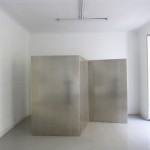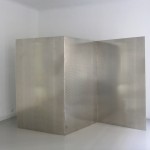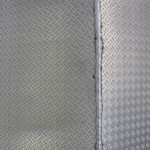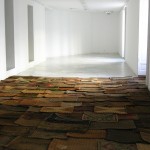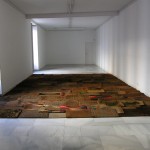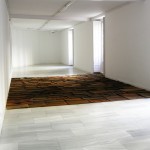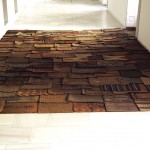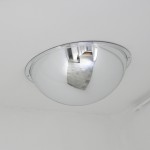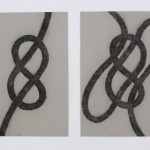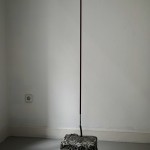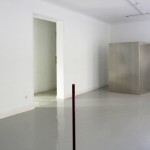MIROSŁAW BAŁKA (Warsaw, 1958)
From January 29 to March 12, 2016
MIROSLAW BALKA
“TRANSIT”
This is Galería Juana de Aizpuru’s 8th exposition showcasing the Polish artist Miroslaw Balka, this time one installation and three pieces entitled TRANSIT.
TRANSIT is meant to give us a look at history, at the stories that are being experienced in Poland and all over Europe, scenarios in which he firmly places himself as an artist and a human being.
The installation we are featuring in the large room is called “Common Ground”, and is made up of 178 old doormats from different houses in Krakow (Poland) and a surveillance mirror on the ceiling.
The 178 doormats are placed to form a huge matt to symbolize the transit from the outside (public) to the inside (private), although it may likewise be understood as a barrier (a border). More than a few people will stop cold at the great doormat and will not cross over it, in which case they will not have perceived it as an element of transit but of separation (border).
The surveillance mirror acts as a safety measure to prevent problems, but also to watch the transit area, although, as we discover soon enough, it also distorts reality.
In the small room are the remaining pieces making up the exhibition:
“285 x 210 x 118 / barley seeds paravane”. This is an aluminum folding screen (a material that is non-magnetic and highly fire-resistant) with a non-skid surface thanks to the textures provided by the marks of the barley seeds. The screens are used to separate the room into two spaces while also allowing for transit from one place to the other, albeit keeping the two out of sight. Nevertheless, in this case we may find ourselves reflected on the outer surface of the screen (the rich part with the barley, one of the first grains of cereal to be grown in Eurasia), so as to lie to ourselves about what is happening on the other side of the space. Either way, it provides for somewhat awkward transit toward its back side.
“Lanyard Knot”. This is a diptych of sketches, charcoal on cardboard. In them we can see a moment in the process of tying a safety knot, and then the finished knot. Knots are tied by means of the transit of the string through itself; once finished, they can be sued both to join together as well as to hinder movement.
Lastly comes the work 138 x 22 x 22 , made up of a block of terrazzo taken from a grave, a glass tube, and red wine (material Balka often uses in his works, as is terrazzo from graves). In Catholic iconography, red wine is the symbol for blood, and thus, for life itself. In this piece, life is being transfused to the inert stone. It is a transit between life and death.
After moving through the two rooms, we can see that the large space is warm, as if made from the heart, whereas the small space is colder, as if it were developed using the head.
All the works in the exhibition may be interpreted in an optimistic way or in a more negative way. Here we merely find a depiction of the world in which the artist and all of us are immersed.
Galería juana de aizpuru. barquillo 44, 28004 madrid. España. T: 34-913105561; fax: 34-913195286. e-mail: aizpuru@juanadeaizpuru.es
 English
English 